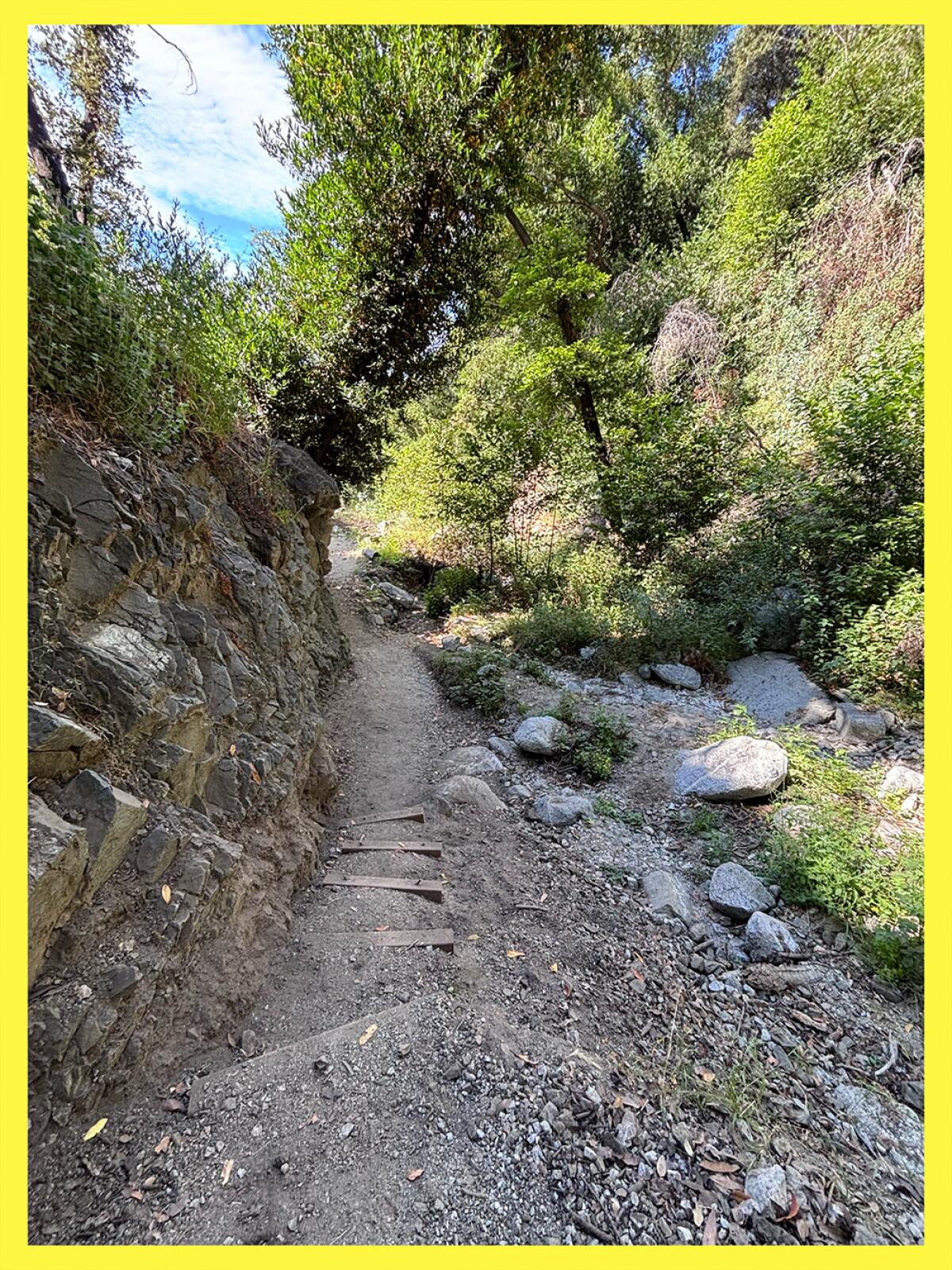Monrovia Canyon Park reopened just in time for this week’s heat wave to remind us that summer is here.
This 80-acre wooded treasure was closed for a few years after it burned in the 2020 Bobcat fire and then suffered significant damage from subsequent flooding. This past week I visited the park, which reopened June 27, where I marveled at massive oak trees and spotted the first bear I’ve seen on a local trail.
Newsletter
You are reading The Wild newsletter
Sign up to get expert tips on the best of Southern California’s beaches, trails, parks, deserts, forests and mountains in your inbox every Thursday
You may occasionally receive promotional content from the Los Angeles Times.
Upon entering the park, it’s easy to notice all the great work that volunteers and staff have completed to improve this cultural treasure. I appreciated the smooth paved roads leading into and through the park. I was greeted by a friendly ranger in a well-made kiosk who was happy to answer my questions about the park’s trails. And I easily found parking on a weekday (and as a bonus, under a shade tree).
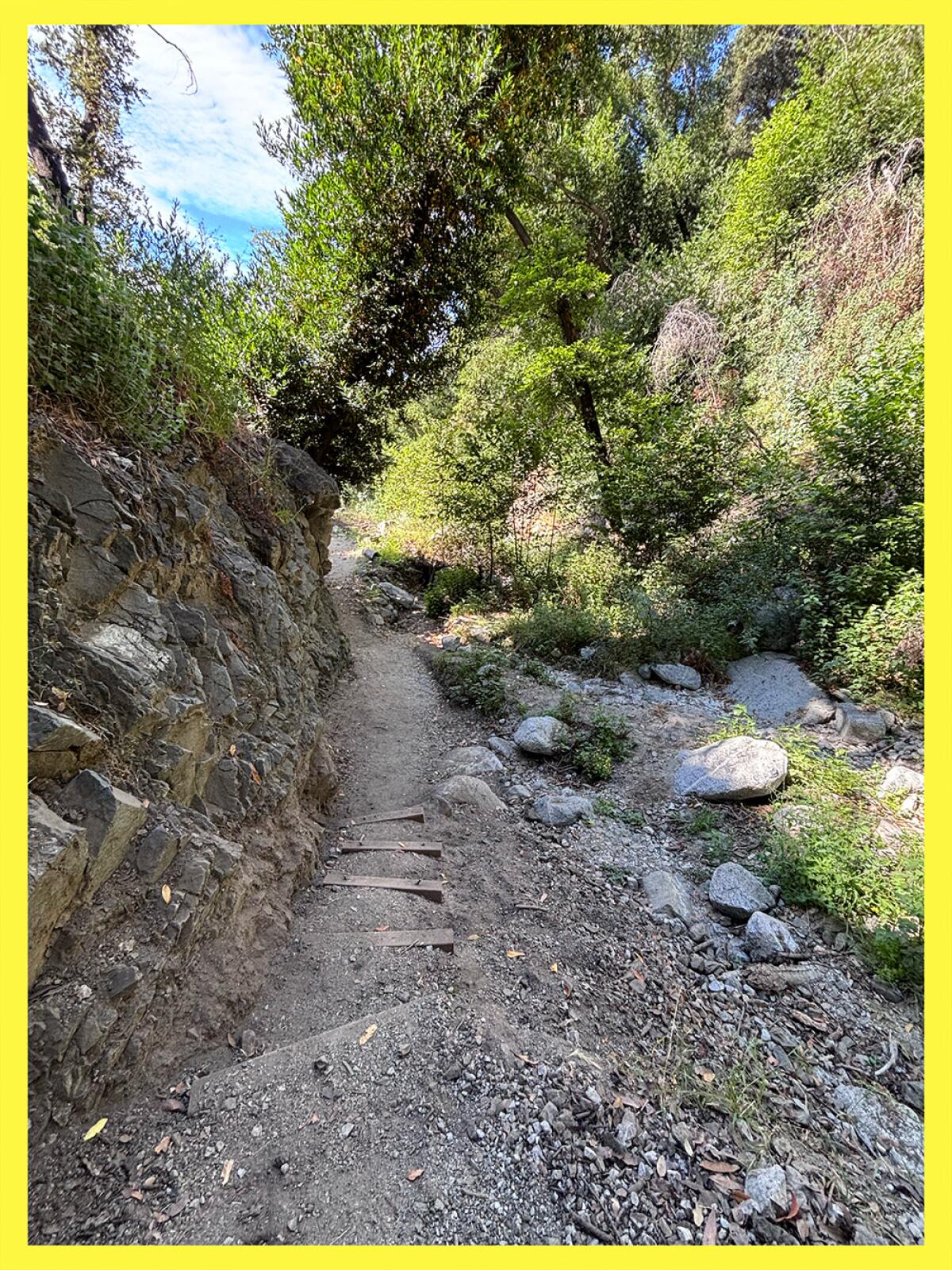
The waterfall trail in Monrovia Canyon Park is shaded by several bay laurel and oak trees.
(Jaclyn Cosgrove / Los Angeles Times)
Soon, Maggie May, the official dog of The Wild, and I headed onto the waterfall trail, a moderate jaunt through the canyon that ranges in length from 1.5 to 3 miles, depending on whether you start at the nature center, cabin or ranger station.
Maggie and I took our time as we headed to the waterfall. One of us lay down in the creek — I’ll let you guess who — appreciating the lush landscape around them. I loved seeing the massive oak trees. How many wildfires have they survived? They always remind me to slow down and appreciate what’s around me, including the resilience of these ancient beauties.
I also spotted a few patches of wildflowers, including bright orange California poppies and the Matilija poppy whose fried egg appearance always makes this breakfast lover a little hungry.
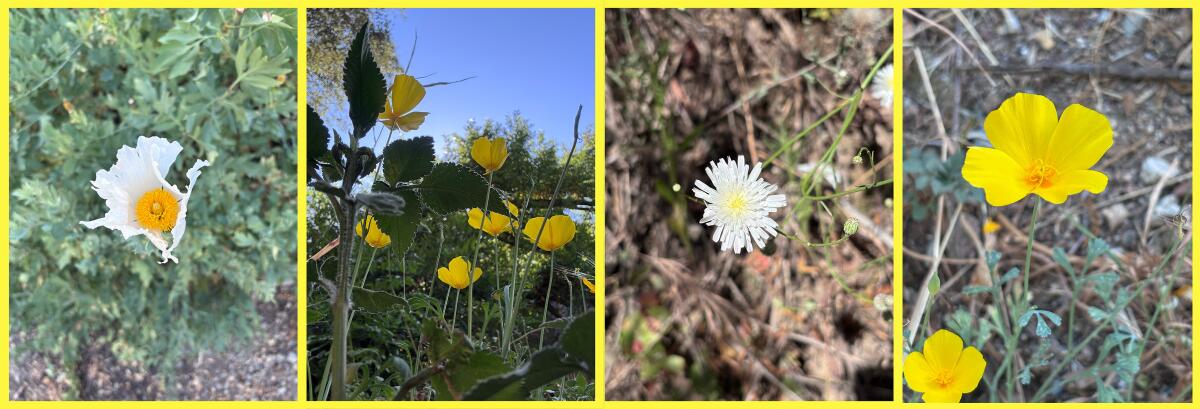
A Matilija poppy, small patches of poppies, and a cliff aster grow in Monrovia Canyon Park.
(Jaclyn Cosgrove / Los Angeles Times)
The trail ends at a 30-foot waterfall that’s flowing for now. Overall, Monrovia Canyon Park reminded me, with its short concrete dams and lush canyon, of nearby Big Santa Anita Canyon, another gorgeous hiking destination with an impressive waterfall.
As Maggie and I headed out of the park, I drove slowly with my windows down, which made it easy to spot the small brown bear when it popped out of the woods just before the ranger kiosk. Bears are frequently spotted in the park, so please keep your dogs on leash. It is required, but especially important to heed given the ursine residents.
Monrovia Canyon Park requires visitors to make reservations when visiting on the weekend. Officials are waiving the parking fee for the first few weeks. Once enforced, it’ll be $5 on weekdays and $6 on weekends.
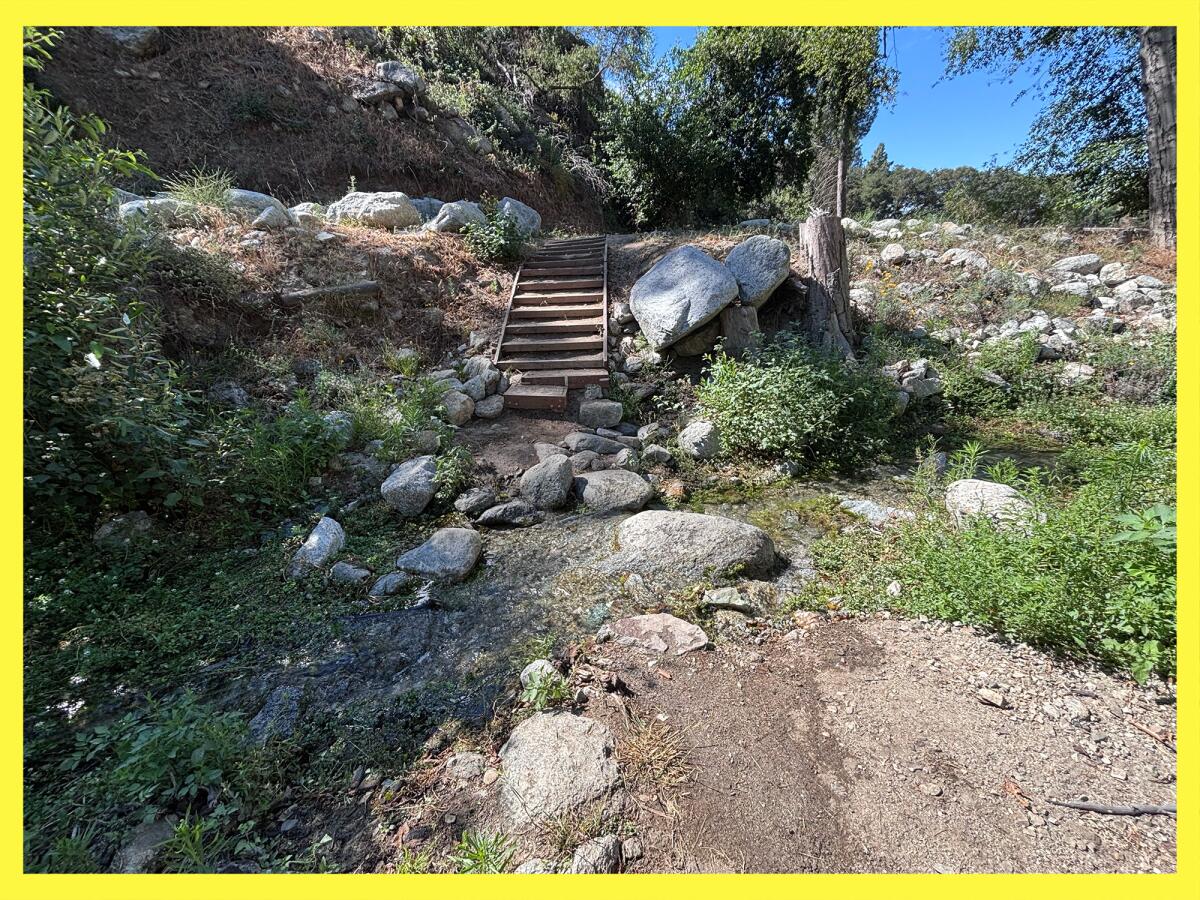
The path to the waterfall in Monrovia Canyon Park includes a few water crossings, none of which are too tricky in the summer months when the water is low.
(Jaclyn Cosgrove / Los Angeles Times)
Before we dive in further, a few reminders on trail etiquette:
- Watch your speed. The trailheads for these hikes involve driving along twisting roads or through neighborhoods.
- Leave no trace. Before leaving, take a moment to read the seven Leave No Trace principles. In short: Observe wildlife from a distance, stay on the trail and pack out whatever you pack in, including orange peels. And please leave the Bluetooth speakers at home.
- Watch your step. It is officially rattlesnake season. Keep an eye out for our misunderstood reptilian residents!
- Bring a map. Regardless of whether you take a photo of the map at the trailhead, download a map on your phone or bring a paper map, please have something with you to guide your way.
- Pack more water than you think you’ll need. I am specifically talking to the hikers with a 12-ounce water bottle on a sunny day. (I will always share my extra water with you, but I hope you won’t ever need it!)
OK, now that we’ve covered that, let’s dive into three hikes near L.A. where you can cool off during or after a hike.
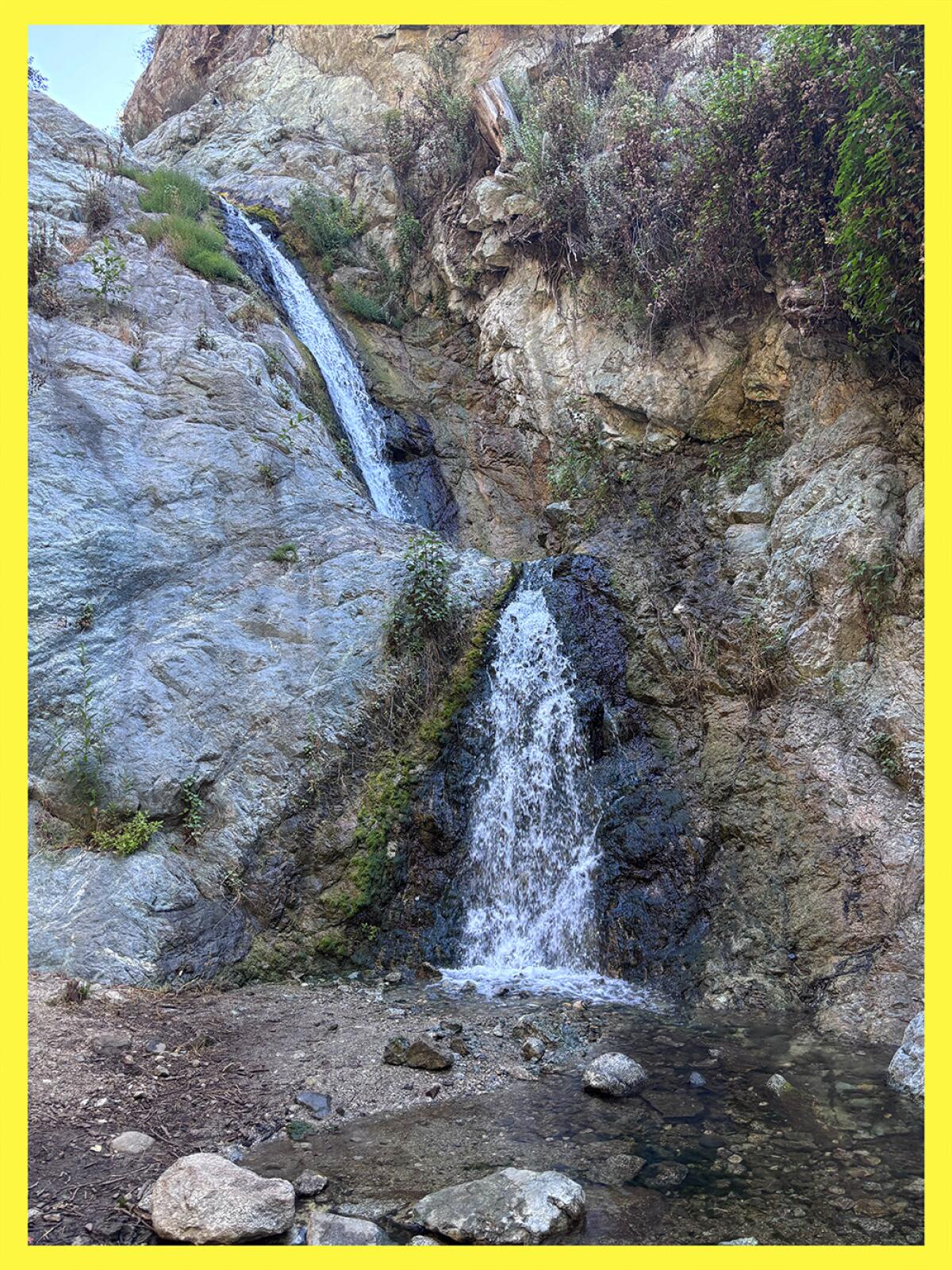
A 30-foot waterfall at Monrovia Canyon Park.
(Jaclyn Cosgrove / Los Angeles Times)
1. The waterfall trail in Monrovia Canyon Park
Distance: 1.5 to 3 miles, depending on starting point
Elevation gained: About 500 feet, although it will vary
Difficulty: Moderate
Dogs allowed? Yes
Accessible alternative: The Legg Lake Loop at Whittier Narrows
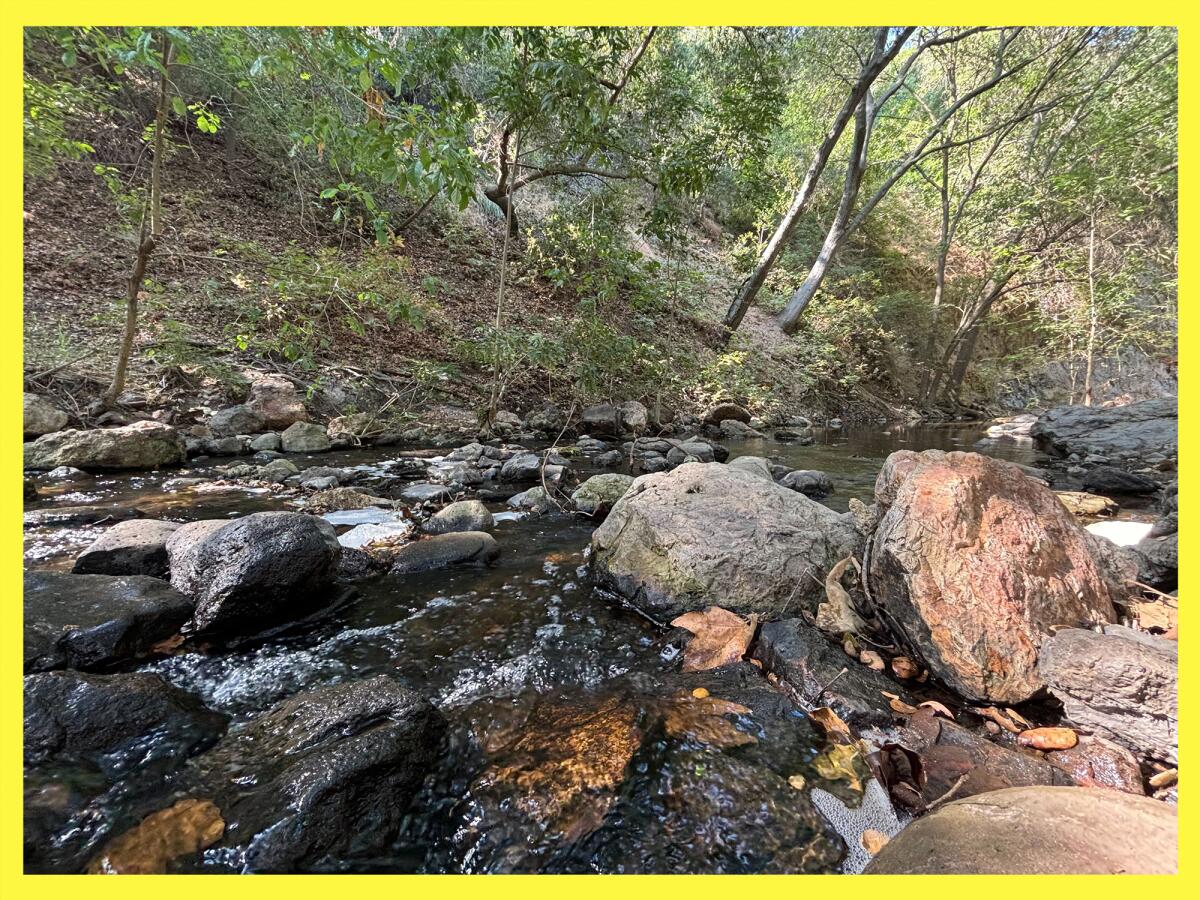
Antonovich Trail follows Walnut Creek and includes multiple creek crossings.
(Jaclyn Cosgrove / Los Angeles Times)
2. Antonovich Trail
Distance: 7.8 miles out and back
Elevation gained: 385 feet
Difficulty: On the easier end of moderate
Dogs allowed? Yes
Accessible alternative: Antonovich Trail; instead of entering the trail off San Dimas Avenue, where you must navigate a steep hill, start the trail from this parking area; the trail is not paved, but it is mostly flat if you head in the westerly direction from the parking lot.
Antonovich Trail is a 7.8-mile out-and-back trek along Walnut Creek, which flows gently through the canyon. The hike is heavily shaded by canopies of fig, coast live oak, eucalyptus trees and several fan palms. Besides a steep descent from the parking lot into the canyon, the route is mostly flat. This is one of my favorite trails that I discovered since I started writing The Wild last July.
As an added bonus, after your hike, you can head over to the swim beach at Puddingstone Reservoir in Frank G. Bonelli Regional Park, which reopened last week after park officials replaced a transformer system.
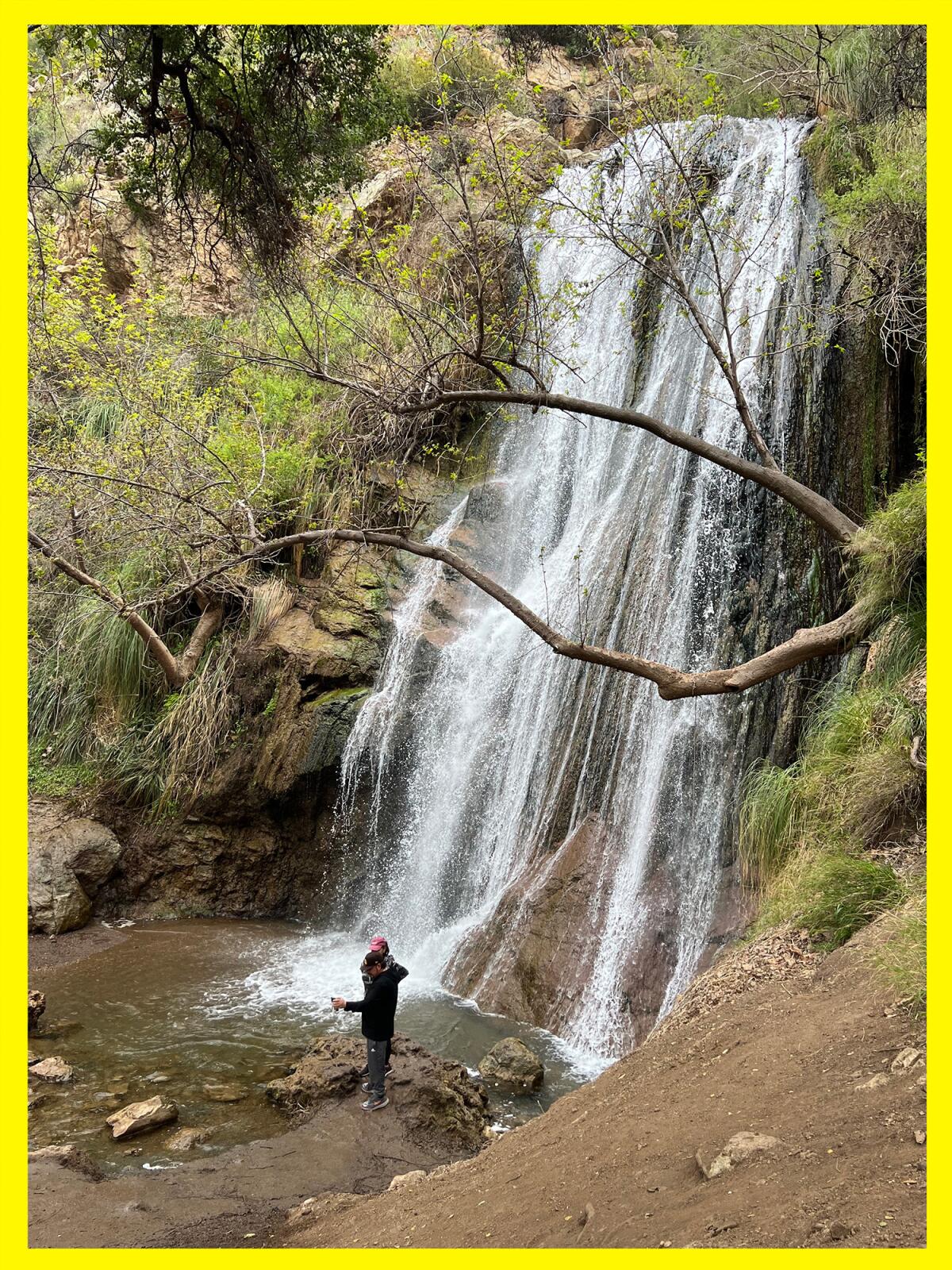
Escondido Falls in a previous year with more rainfall.
(Raul Roa / Los Angeles Times)
3. Escondido Falls trail
Distance: About 3.5 miles
Elevation gained: About 500 feet
Difficulty: Moderate
Dogs allowed? Yes
Accessible alternative: Ann Skager Trail in Malibu Creek State Park
The 3.5-mile hike to Escondido Falls, a 150-foot multi-tiered waterfall, passes through oak woodlands and coastal sage scrub, two native landscapes with plants and trees that provide shade and ground cover — and are more adapted to wildfires than invasive plants — for hikers and the animals who live in the region. You’ll likely spot laurel sumac and buckwheat, along with several lizards darting across your path.
Even when the waterfall is only a trickle, the park itself will be a cooler spot to hike than others on this list, given its proximity to the ocean.
Like the other two hikes on this list, Escondido Canyon often offers a reprieve from an otherwise hot day.

3 things to do
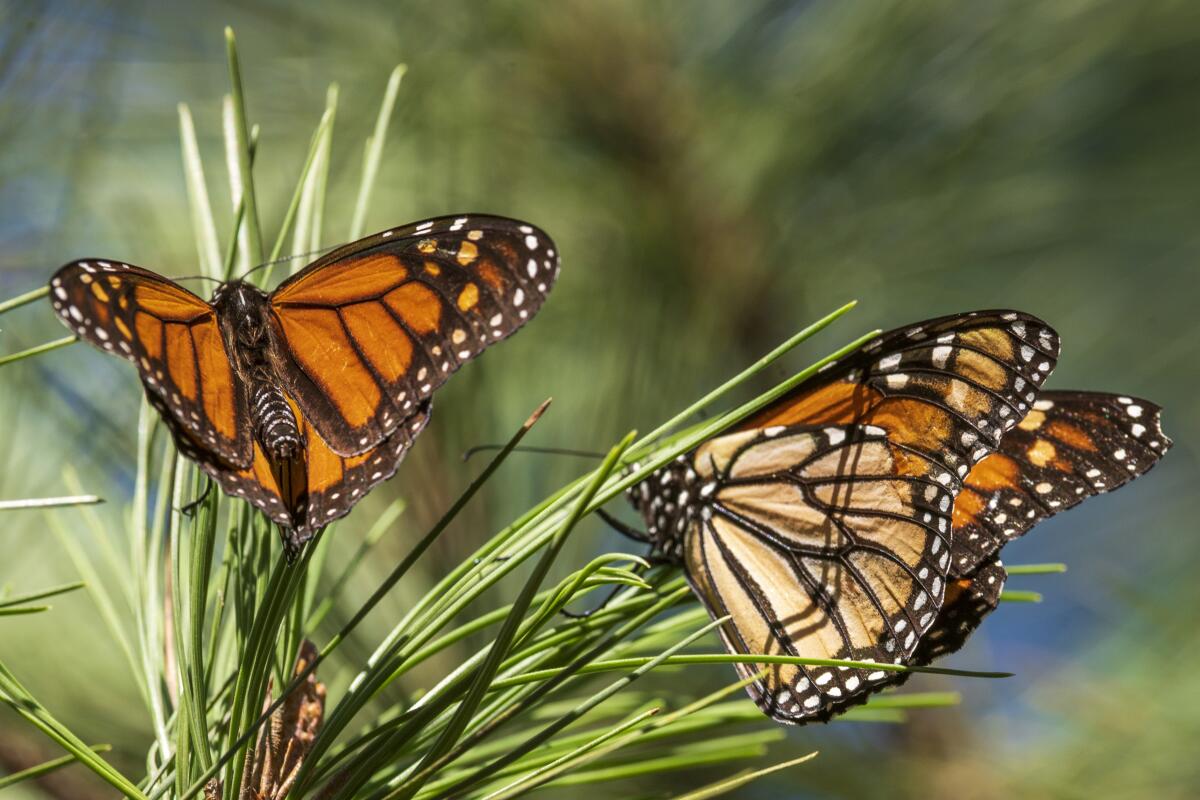
Monarch butterflies land on branches at Monarch Grove Sanctuary in Pacific Grove, Calif.
(Nic Coury / Associated Press)
1. Plant habitat for monarchs in L.A.
Volunteers are needed Saturday from 9 to 11 a.m. at Ascot Hills park nursery (4371 Multnomah St.) to develop habitat for monarchs. The Santa Monica Mountains Fund will host the event along with Monarch Mami, North East Trees and El Serenity Garden. Register at eventbrite.com.
2. Improve wetlands in Marina del Rey
The Ballona Wetlands Land Trust will host a stewardship event from 9 to 11 a.m. Saturday where volunteers will yank invasive plants among other tasks. The organization will provide gloves and tools. Participants should bring water, close-toed shoes and sun protection. Learn more at the group’s Instagram page.
3. Get your honky tonk on near Santa Clarita
Vasquez Rocks Natural Area will host a free celebration of western songs from 5:30 to 8 p.m. Sunday at the park. Participants are encouraged to bring their dancing boots, a picnic, camp chairs and their favorite western wear (like whatever you have left over from Beyoncé’s Cowboy Carter Tour). Food trucks and other vendors will sell food and other items. Learn more at the park’s Instagram page.

The must-read
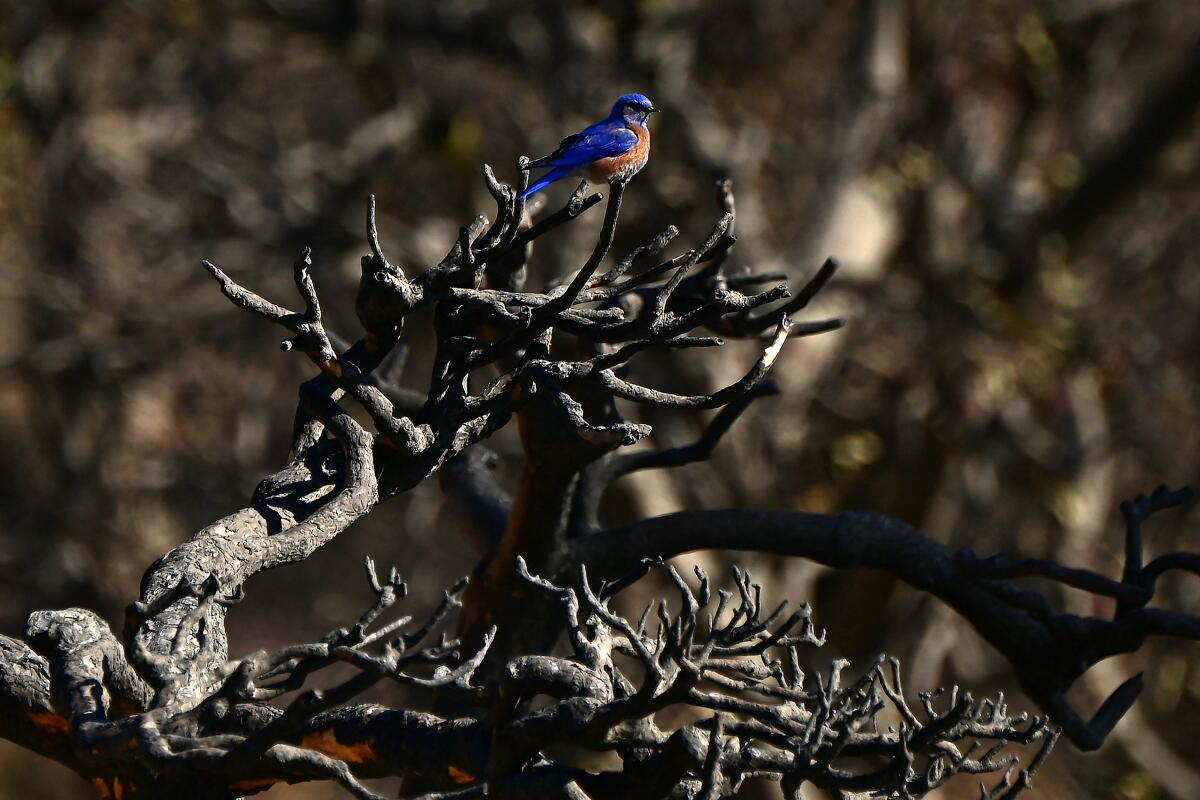
A western bluebird perches on a charred branch of a burned tree in the aftermath of the Eaton fire in Altadena.
(Agustin Paullier / AFP via Getty Images)
Would you like an excuse to walk around outside for 10 minutes a week and, in turn, contribute to science? Times staff writer Corinne Purtill reports that Project Phoenix, a multiyear research project exploring birds’ response to wildfire, needs volunteers in California, Oregon and Washington to collect data from July through November. The data you collect — 10 minutes a week in the same location — will aid in the understanding of the effects of wildfire smoke on birds, an understudied topic. Scientists would like to understand whether birds fly to new places when air quality declines or if they’re changing in other ways when their nests get smoky. “These are the hypotheses we are hoping to test with the data we collect in 2025,” said program director Olivia Sanderfoot, a UCLA ornithologist. “The more people we have engaged, the more likely that we will have people in place to capture these impacts where they occur. It requires people power.”
I just signed up to volunteer, and can confirm it’s quite an easy process.
Happy adventuring,

P.S.
Do you have a bored teenager at home? Send them to a public garden. From now through Labor Day, teens ages 13 to 18 with valid student ID can visit the Los Angeles County Arboretum, Descanso Gardens, Virginia Robinson and South Coast Botanic Garden for free. Perhaps challenge them to take photos of plants they’ve never seen, and you can look them up together as a family at home.
For more insider tips on Southern California’s beaches, trails and parks, check out past editions of The Wild. And to view this newsletter in your browser, click here.
